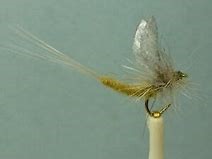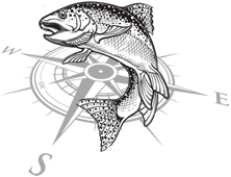Extended Body Parachute Blue Winged Olive Mayfly

The Blue Winged Olive Mayfly (Baetis) is arguably the most important mayfly trout will feed on. It is also one of the most complex may fly hatches an angler will be a part of. It’s the most important may fly hatch because it’s the only mayfly that hatches twice a year. That’s what makes this mayfly the most important mayfly we can have in our fly box. The Blue Winged Olive is normally the first mayfly on the water following Winter and the last mayfly on the water in the Fall. Trout will stock up on these guys in the spring for they have lacked any other hatch outside of the midge all Winter. In the Fall they will gorge themselves on these little guys as if they know this will be the last of their consistent food source. The Spring brood is a smaller mayfly in the size 18 category while the Fall/Winter brood is in the size 20 category.
The Extended Body Para BWO is a remarkable Blue Winged Olive mayfly emerger fly pattern that can best mimic what the trout sees up close. These pretty little mayflies have a beautiful extended body that most mayflies exhibit. This is a pattern that is not widely used among fly anglers and therefore the trout doesn’t see a lot of these patterns being tossed at them. The trout’s view of the fly from under the surface is of a little BWO mayfly with its body in full view on the meniscus (Surface film). The Parachute style pattern with a tall wing will keep the fly riding just on or in the meniscus while the parachute style hackle and poly or CDC wing will keep the fly in full view for the angler. Finally, from an entomological view this fly is probably one of the most accurate hatching emerger pattern available on the market. This fly might be hard to find in most fly shops at this time but as the popularity of the fly increases it will become a staple fly at most fly shops.
To use this fly effectively you need to keep this fly floating on the surface. If this fly sinks then all is lost, you have essentially made the fly ineffective and it will lose all it’s characteristics that make the fly effective. A good technique is to apply a liquid floatant that takes 24 hours to cure a day or so before you plan to be on the river. Then use a good floatant on the body of the fly before fly fishing and keep the fly floating by using a dry shake or brush on powder.

